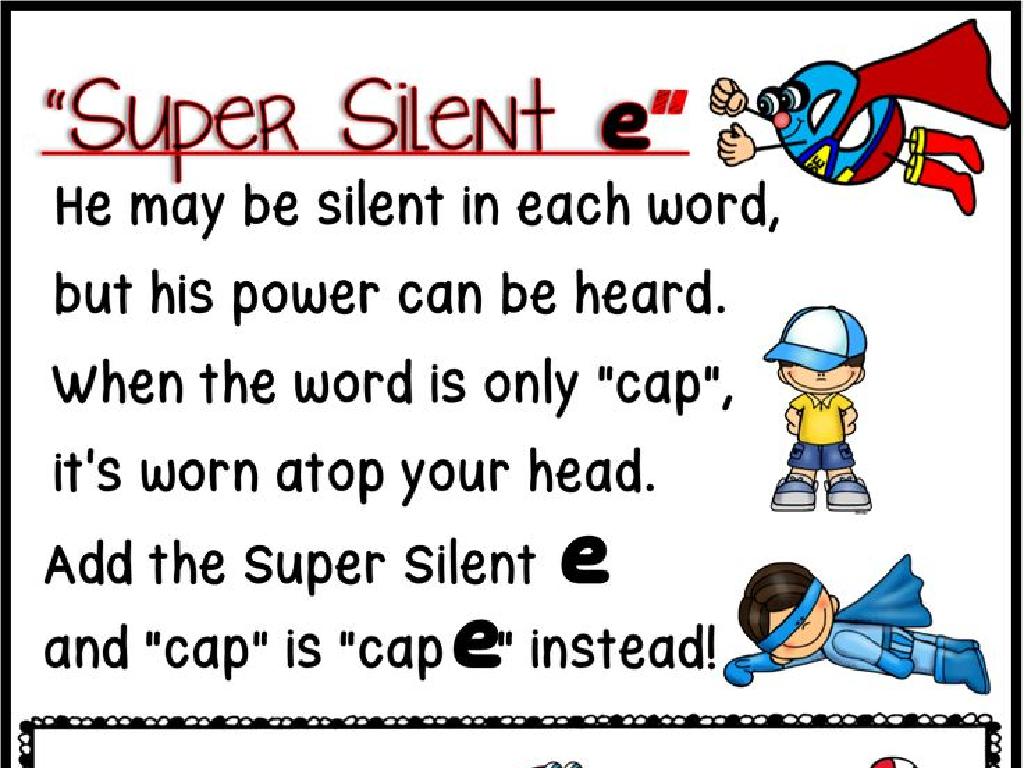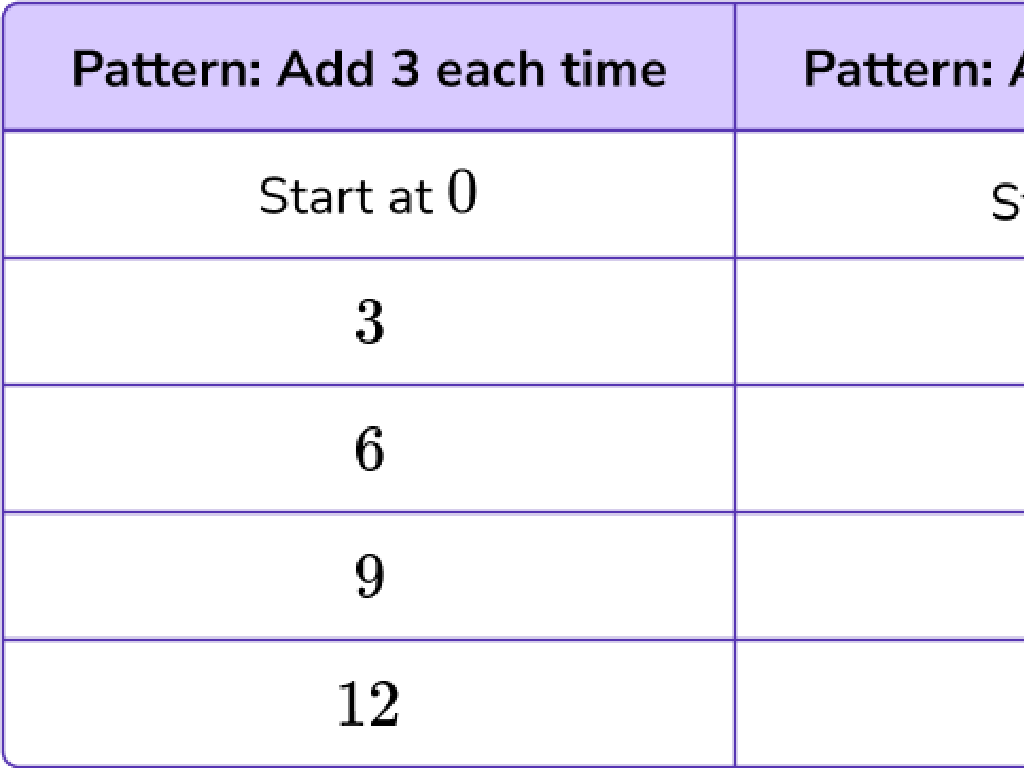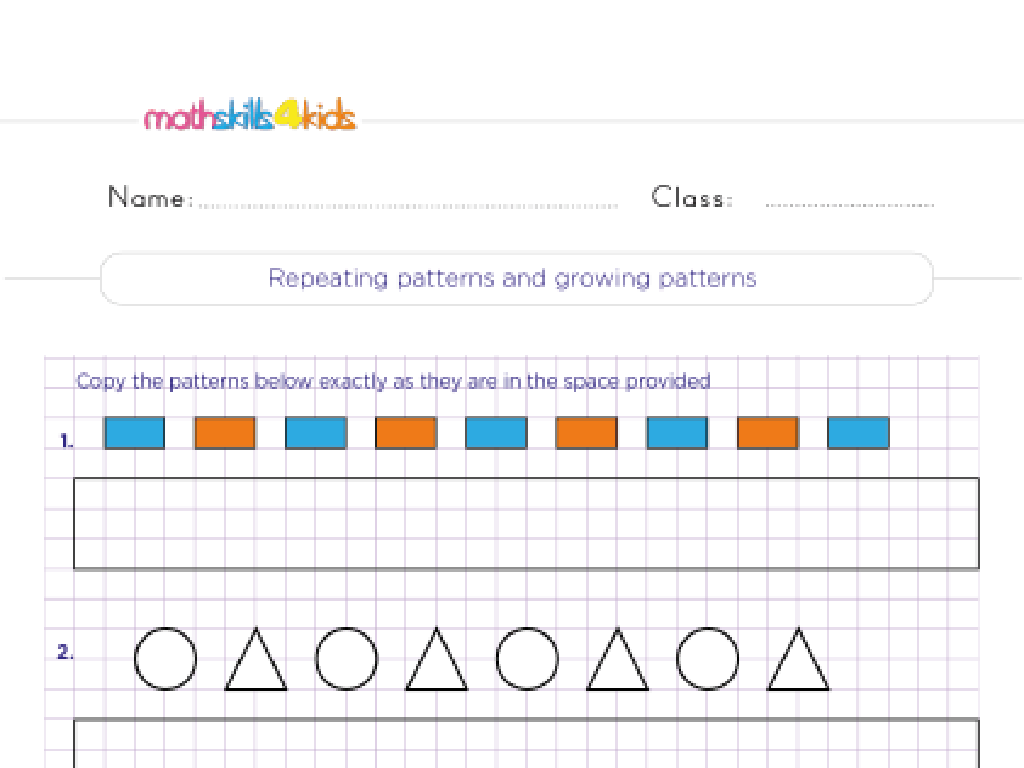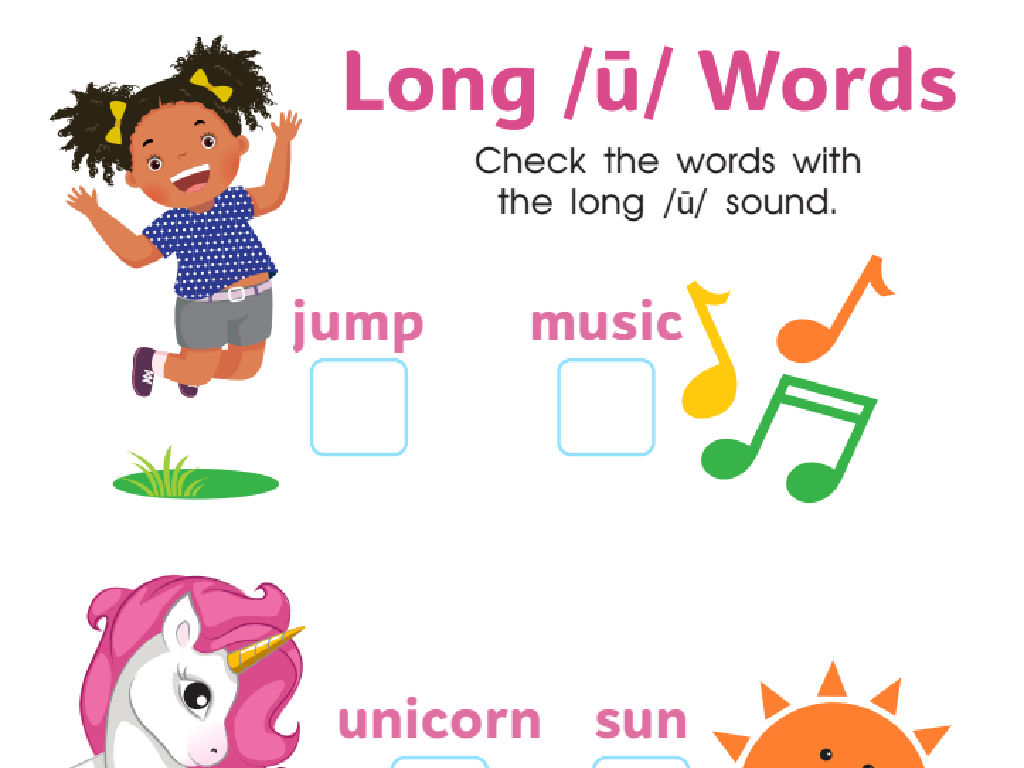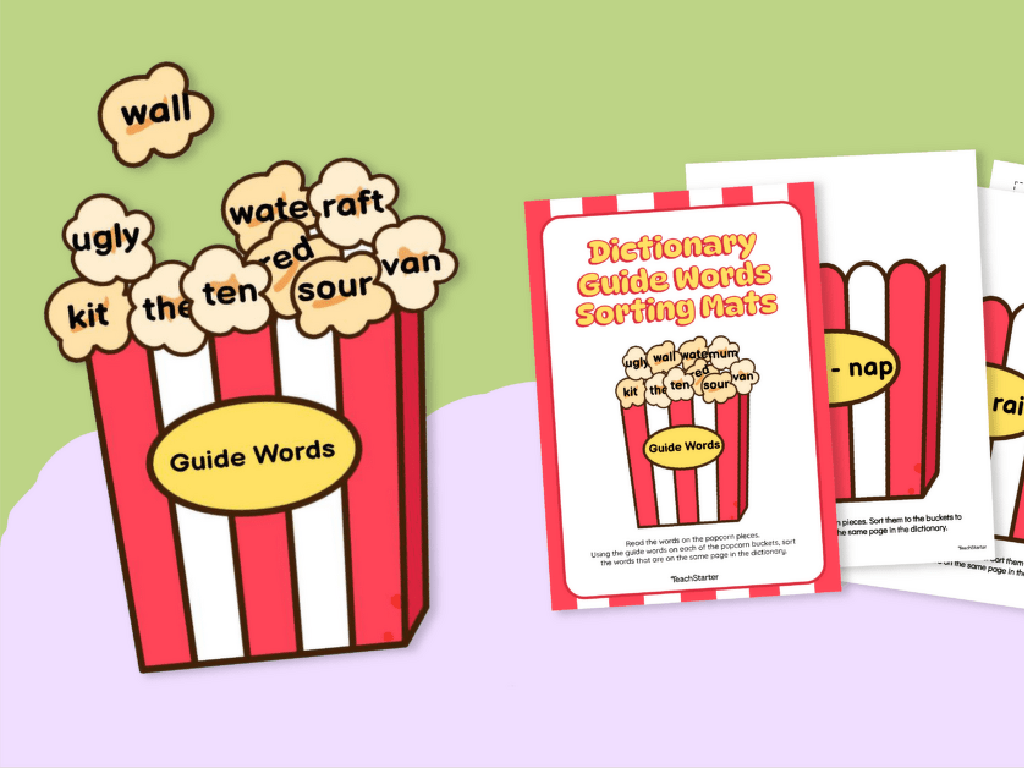Is It A Complete Sentence Or A Run-On?
Subject: Language arts
Grade: Second grade
Topic: Sentences, Fragments, And Run-Ons
Please LOG IN to download the presentation. Access is available to registered users only.
View More Content
Today’s Adventure: Complete Sentences vs. Run-ons
– What makes a sentence complete?
– A complete sentence has a subject, verb, and makes sense on its own.
– Spotting run-on sentences
– Run-ons are sentences that go on too long without proper punctuation.
– Building blocks of writing
– The role of sentences in stories
– Sentences help us share ideas clearly in stories and talks.
|
This slide introduces the concept of complete sentences versus run-on sentences, which is crucial for developing writing skills. Start by explaining that a complete sentence must have a subject and a verb, and it must express a complete thought. Then, describe a run-on sentence as one that combines too many ideas without proper punctuation, making it confusing. Emphasize the importance of sentences as the building blocks of writing, which help us communicate our ideas clearly. Use examples from familiar stories or everyday conversations to illustrate the difference between complete sentences and run-ons. Encourage students to practice identifying and correcting run-on sentences to improve their writing.
Understanding Sentences
– What makes a sentence?
– Sentences have a subject
– The ‘who’ or ‘what’ of a sentence
– Sentences have a predicate
– Tells us what the subject does
– Example of a complete sentence
– ‘The cat’ is the subject, ‘sleeps’ is the predicate
|
This slide introduces the basic concept of a sentence to second-grade students. It’s important to explain that a sentence is not just a random collection of words, but a complete thought that has two main parts: a subject and a predicate. The subject is the ‘who’ or ‘what’ the sentence is about, and the predicate explains what the subject is doing. Use simple examples like ‘The cat sleeps’ to illustrate this point. Encourage students to identify subjects and predicates in sentences and to check if the sentences they write express a complete thought. This will help them distinguish between complete sentences and run-ons.
Sentence or Fragment?
– What is a fragment?
– A fragment is an incomplete sentence missing a subject or a verb.
– Example: ‘On the moon.’
– Let’s fix the fragment
– We can make it a full sentence by adding what’s missing.
– Complete sentence: ‘The astronaut walked on the moon.’
– Now it tells us who did what, making it complete!
|
This slide introduces the concept of sentence fragments to second graders. Begin by explaining that a sentence needs two main parts: a subject (who or what the sentence is about) and a predicate (what the subject is doing). Show them how a fragment is like a puzzle piece that’s not yet connected to the whole picture. Use the example ‘On the moon.’ to illustrate a fragment and then demonstrate how to turn it into a complete sentence by adding a subject and a verb. Encourage students to look for the subject and the predicate in the sentence to determine if it’s complete. Practice with more examples and ask students to identify fragments and fix them by adding the missing parts.
Spotting Run-on Sentences
– What is a run-on sentence?
– Two sentences joined without a break
– It’s like riding two horses!
– Imagine doing two things at once, that’s hard!
– Example of a run-on
– ‘The sun is bright it hurts my eyes’ needs a break between ‘bright’ and ‘it’.
|
This slide introduces the concept of run-on sentences to second graders. Explain that a run-on sentence is like trying to do too much at once, such as riding two horses at the same time, which is not easy or correct. Use the example provided to show how two separate ideas are incorrectly joined without a pause or proper punctuation. Emphasize the importance of taking a break between different thoughts, which in writing means using punctuation like periods or commas. Encourage students to always look for where one idea ends and another begins to avoid run-ons. Practice with more examples and have students correct run-on sentences as an activity.
Fixing Run-on Sentences
– Run-ons need fixing
– Use a period to fix
– Stops one idea and starts another. Example: ‘The sun is bright. It hurts my eyes.’
– Use a comma and conjunction
– Joins two ideas with a connector. Example: ‘The sun is bright, so it hurts my eyes.’
– Use a semicolon
– Joins closely related ideas. Example: ‘The sun is bright; it hurts my eyes.’
|
This slide is aimed at teaching second graders how to identify and correct run-on sentences. Run-on sentences occur when two or more ideas are incorrectly joined without proper punctuation. Teach the students that they can fix a run-on by ending one complete thought with a period and starting a new sentence. Alternatively, they can use a comma followed by a conjunction like ‘and’, ‘but’, or ‘so’ to join two related ideas. Lastly, a semicolon can also be used to connect two closely related ideas. Use the examples provided to illustrate each method. During class, practice with more examples and encourage students to create their own sentences using these techniques.
Let’s Practice Together!
– I’ll write, you classify the sentence
– Is it complete or a run-on?
– We’ll correct sentences together
– Check for subject, predicate, punctuation
– A subject does something, and a predicate tells what they do. Don’t forget the punctuation!
|
This interactive slide is designed for a class activity where the teacher writes sentences on the board, and students determine whether they are complete sentences or run-ons. The teacher should guide the students through the process of identifying the subject (who or what the sentence is about) and the predicate (what the subject is doing). Emphasize the importance of punctuation in determining sentence boundaries. Prepare a list of example sentences in advance, some of which should be run-ons, to use during the activity. Encourage students to explain their reasoning for each sentence they classify. This will help them understand sentence structure and improve their writing skills.
Class Activity: Sentence Scavenger Hunt
– Let’s hunt for sentences around us
– Find complete sentences and run-ons
– Look in books and on classroom posters
– Pair up for a sentence mission
– Work with a buddy to spot tricky run-ons
– Turn run-ons into complete sentences
– Practice fixing run-ons to make them complete
|
This interactive activity is designed to help students identify complete sentences and run-on sentences within their immediate environment. Encourage them to work in pairs to foster collaboration. Provide clear examples of what constitutes a complete sentence versus a run-on sentence before they begin. As they find examples, guide them to discuss why a run-on sentence is incorrect and how it can be corrected. Offer support and praise as they convert run-ons into proper sentences. This hands-on approach reinforces their understanding of sentence structure in a fun and engaging way. Possible variations of the activity could include finding sentences in different colors, writing down the sentences they find, or even creating a small presentation of their findings to share with the class.
Wrapping Up: Sentences vs. Run-ons
– Congrats on learning about sentences!
– Homework: Write 3 complete sentences
– Make sure each has a subject and a verb
– Include 1 run-on sentence in homework
– Remember, run-ons have too many ideas without proper punctuation!
– Next class: We’ll fix run-ons together
|
Today, we’ve learned to distinguish between complete sentences and run-on sentences. For homework, students are tasked with writing three complete sentences, each with a subject and a verb, and one run-on sentence. This exercise will help reinforce their understanding of sentence structure. In the next class, we will use these examples to practice correcting run-on sentences, enhancing their editing skills. Encourage creativity in their sentences and remind them that run-ons are not ‘bad’ but opportunities to learn how to use punctuation effectively.

